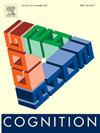变化盲目性,子集分割,以及子集数目的感知低估
IF 2.8
1区 心理学
Q1 PSYCHOLOGY, EXPERIMENTAL
引用次数: 0
摘要
人类在感知上估计不同颜色点集合子集的能力有多好?人们可以同时评估至少两个颜色定义子集的数量。但是,当在中灰色背景上呈现相同(较大)数量的浅灰色和白色圆点时,白色圆点似乎比灰色圆点少。本文提出了6个实验,旨在验证这些行为是由于基于颜色相似性的图-地分割导致的假设,这可能导致分割不完整,从而导致对前景点的感知低估。具有讽刺意味的是,子集匹配对于难以分割的点集是最准确的,例如白色中的浅灰色。这是通过一个颜色变化检测任务来证明的:(1)准确的子集估计只会在抵制前景选择的集合中完成,(2)当灰色点的正面平面被更成功地分割时,即使是立体背景白点也无法被分割(即有机会被颜色变化检测)。虽然外显的注意力偏置被证明可以在不同颜色的点之间改变表现,但它并不能提高在白色点中选择浅灰色点的表现。还表明,混合颜色超集的感知低估可能与低估的前景与准确估计的背景相结合是一致的。本文章由计算机程序翻译,如有差异,请以英文原文为准。
Change blindness, subset segmentation, and the perceptual underestimation of subset numerosity
How well can humans perceptually estimate subsets of collections of differently colored dots? People can simultaneously evaluate the numerosity of at least two color-defined subsets. But when equal (largish) numbers of light gray and white dots are presented on a medium-gray background, there appear to be fewer white dots than gray dots. The present paper presents 6 experiments designed to test the hypothesis that these behaviors are due to figure-ground segmentation based on color similarity, which can lead to incomplete segmentation, and thus perceptual underestimation of foregrounded dots. Ironically, subset matching is most accurate for sets of dots that are difficult to segment, such as light gray among white. This is demonstrated using a color-change detection task to show that (1) accurate subset estimation is only accomplished for sets that resist foreground selection, and (2) even stereoscopically backgrounded white dots fail to be segmented (i.e., are at chance for color change detection) when a frontal plane of gray dots is more successfully segmented. Although explicit attentional biasing is shown to shift performance between dots differing in chromatic color, it does not improve performance at selecting light gray dots among white. It is also shown that the perceptual underestimation of supersets of mixed colors may be consistent with combining an underestimated foreground with an accurately estimated background.
求助全文
通过发布文献求助,成功后即可免费获取论文全文。
去求助
来源期刊

Cognition
PSYCHOLOGY, EXPERIMENTAL-
CiteScore
6.40
自引率
5.90%
发文量
283
期刊介绍:
Cognition is an international journal that publishes theoretical and experimental papers on the study of the mind. It covers a wide variety of subjects concerning all the different aspects of cognition, ranging from biological and experimental studies to formal analysis. Contributions from the fields of psychology, neuroscience, linguistics, computer science, mathematics, ethology and philosophy are welcome in this journal provided that they have some bearing on the functioning of the mind. In addition, the journal serves as a forum for discussion of social and political aspects of cognitive science.
 求助内容:
求助内容: 应助结果提醒方式:
应助结果提醒方式:


